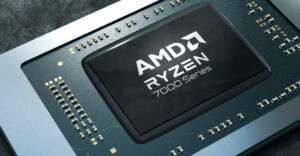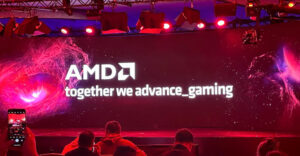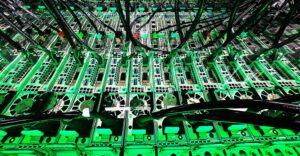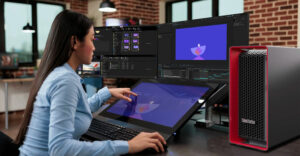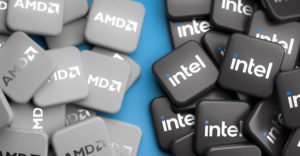AMD is on a run now. No longer in Intel’s shadow, it’s taking the PC market and data center by storm. While part of the reason is that Intel stumbled badly under a prior CEO, much of it is because of AMD’s almost unbelievable focus on unique customer segment needs.
While AMD has always tended to be one of the more responsive vendors in its segment, it was when the company decided to go after the game console market, which none of its peers wanted, that forced AMD to improve its responsiveness and partner collaboration, and it is this extra step that has turned AMD from a lamb to a lion in the market.
Let’s explore AMD’s lessons learned from the gaming market to target opportunities. Then we’ll close with my Product of the Week, a variant of the Dell headset I covered a couple of weeks ago that is tuned just for gaming: the Alienware AW720H headphones.
AMD’s Data Center Event
Last week AMD had a huge press and analyst data center event in San Francisco at the historic Fairmont Hotel. AMD exhibited benchmark after benchmark that showed its parts significantly outperforming competitive offerings. This alone wouldn’t have meant much because benchmarks from a vendor showcasing an advantage are questionable at best.
But AMD took it one big step further. For nearly every major processor announced, it had a credible customer, including Amazon, Google, and Microsoft, who backed up AMD’s claims of better performance and higher energy efficiency.
Industry legend Forrest Norrod, who left Dell to work for AMD, introduced one of the most interesting customers: Citadel Securities COO Jeff Maurone, who was effusive in his praise for AMD, claiming that their solution had boosted Citadel’s performance by a staggering 35%.
Since Citadel Securities is one of the largest market makers in the world, where microseconds can make a difference, this was massive praise from an unimpeachable source. Citadel is unimpeachable because not only is it regulated, but performance flows to its bottom line so that it would be unforgiving should a part not meet expectations.
So clearly, AMD’s effort was up to the task, with 1 million concurrent cores handling 100 petabytes of data to predict market moves better. But each of the three cloud vendors, and even Facebook, told similar stories that AMD’s parts weren’t being overhyped and could do what AMD said they’d do.
This isn’t a surprise because AMD’s CEO, Lisa Su, is out of IBM, which teaches its executives that integrity is critical to their success, a lesson that Lisa Su has taken to heart because I’ve never known her to overstate a capability.
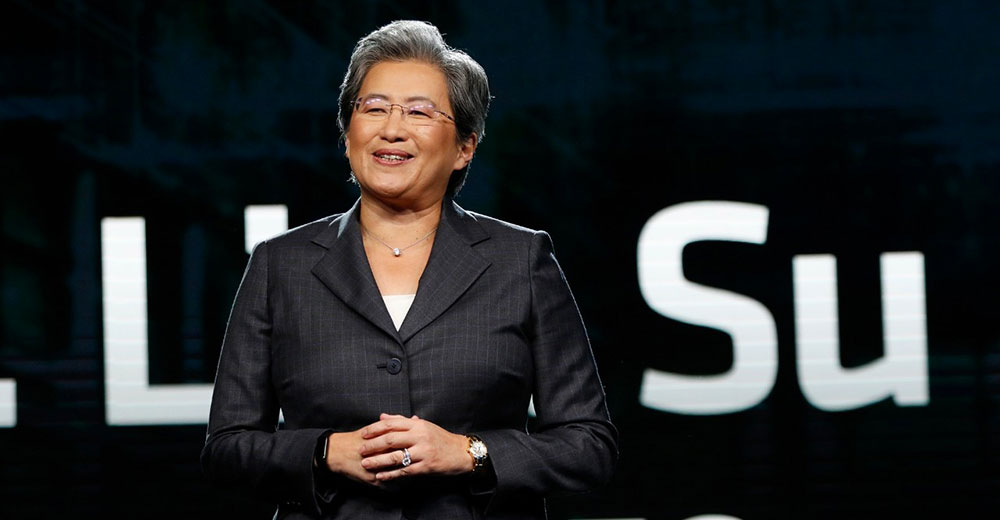
AMD CEO Lisa Su (Image Credit: AMD)
What was also interesting was that the featured OEM wasn’t HP or Lenovo, both of which have long used AMD parts, but Dell, which has historically resisted using AMD for much of anything. Based on what was said on stage, Dell is a believer now in AMD big time.
Lessons Learned From Gaming
One of the ways AMD moved around Intel was by listening to what the vertical markets wanted that they weren’t getting. This was a concern because the risk to all the chip companies was that some of the largest cloud vendors had seemed to decide they could design chips as well or better than a chip company and had started to build their own chips.
A chip company like AMD should be able to build a better, faster, and cheaper part than a do-it-yourself effort, but not if they didn’t listen to what the customer wanted. This not-listening-to-customers has been common in the PC and server market since its inception, but it left some of the largest companies dissatisfied. So, they started designing and using their own processors, a trend that could put companies like AMD and Intel out of business if taken to its logical conclusion.
But AMD’s extensive experience, intellectual property, and early pivot to chiplets have given the chipmaker a significantly improved market position and allowed it to target markets better with unique products for web hosting, telephony, hyperscale computing, AI, and memory design, providing up to 2x performance improvements in the targeted markets. This goes a long way toward explaining AMD’s success.
The Demise of MLPerf
Another interesting thing happened at the event: many of the customers that came to the stage didn’t appear to use benchmarks like MLPerf anymore.
MLPerf is one of the most widely used benchmarks for AI, but according to AMD and the customers they had on stage, no one uses it outside of the chip companies. In fact, looking at many of the popular benchmarks, outside of chip company bragging rights, they aren’t used that much for evaluating a purchase. Instead, customers are using their own datasets and solutions to assess products in-house, much like they would if they were designing their own chips, in order to make a choice.
This is why it became so critical for AMD to get in close and collaborate with these customers because they needed to design and tune their unique data center processors for these equally unique vertical workload types, with the result being, according to the customers on stage, vastly more powerful than the alternatives.
With this move to using actual workloads to test hardware, I’m starting to wonder if generic benchmarks even make sense to use anymore.
Wrapping Up
Of the three major chip companies in the U.S., AMD has fewer distractions, making it more able to target market opportunities and design unique products to meet those opportunities. It uses skills refined while going into the game console market to foster deeper relationships with and create unique solutions for some of the world’s largest cloud and financial clients.
Customers like Petronas, a huge international energy company, drove home that AMD’s solution is significantly better than competitive offerings. AMD’s focus on relationships is paying huge dividends and cementing its position as an emerging leader in the semiconductor industry.
One final observation: While some of the benchmarks called out Intel, much of AMD’s presentation was far more focused on understanding and meeting customers’ needs, a critical pivot as the company moves from trailing to leading its segment.

Alienware Dual-Mode Wireless Gaming Headset – AW720H
Dell’s Alienware AW720H headphones look identical to the AW920H headphones I reviewed two weeks ago but are very different. In comparison, the AW920H are Bluetooth headphones, but the AW720H headphones are not. You need to use the included dongle or wired connector to get them to work.
At $129.99, these headphones are about $70 cheaper than the AW920H headphones, which is a nice savings, and they seem to have very similar microphones and speakers.
While you might be able to get these to work with your smartphone using a cable, they are really designed for gaming and trade off the usage breadth of Bluetooth headphones to provide lower latency and better sound performance for gamers — the target market for these headphones.
The AW720H headset comes in black, called Dark Side of the Moon, and off-white, called Lunar Light. I prefer black. You could also use these for video conferencing with the dongle or cable on a desktop or laptop computer. Though I’d argue a non-Bluetooth solution is likely better for a desktop user than a laptop user unless it’s a gaming laptop, but only because it is generally easier to use a Bluetooth set of headphones for most things.
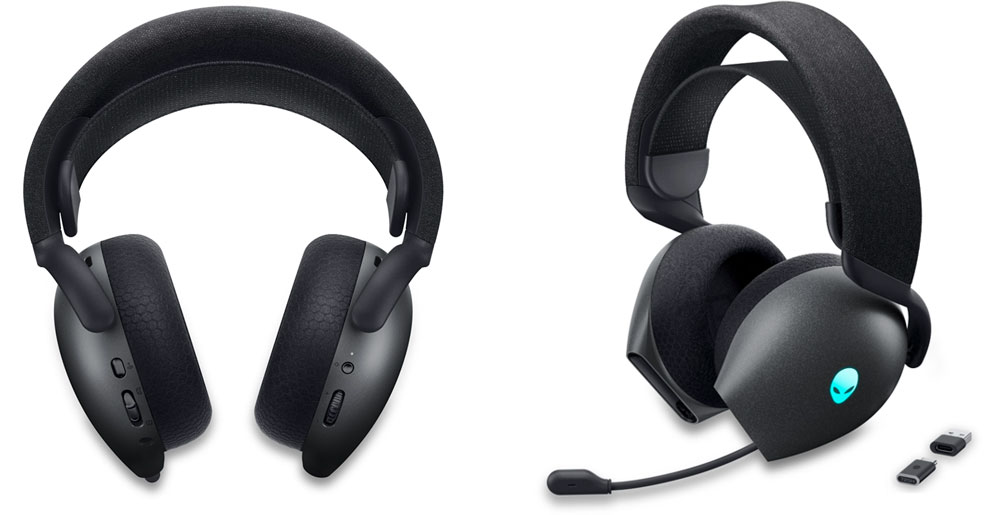
The Alienware Dual Mode Wireless Gaming Headset AW720H supports Dolby Atmos and provides up to 30 hours of play on a full charge. (Images Credit: Dell)
The music is clear to my ear, but these headphones emphasize the lows more than the highs, resulting in sound skewed toward the low end. I mostly used these with the included audio cables on my gaming rig, and they worked fine for this intended purpose. I expect they will also function well on airplanes that still need a physical connection via an audio cable.
With 30 hours of estimated battery life, they should last longer than most of us would be playing or listening. When connected physically, they continue to work passively as headphones, even without power, so they aren’t useless if you forget to charge them. Still, these are targeted at gamers and best suited for gaming.
Like the AW920Hs, the AW720H headphones have a boom mike with a light to tell you when you are broadcasting, and the Alienware lighted Alien head on the outside of the headphones.
If you want a headset truly tuned for gaming to use mainly on a desktop computer and don’t want to break the bank, the Dell Alienware AW720H headphones are my recommendation and Product of the Week.



